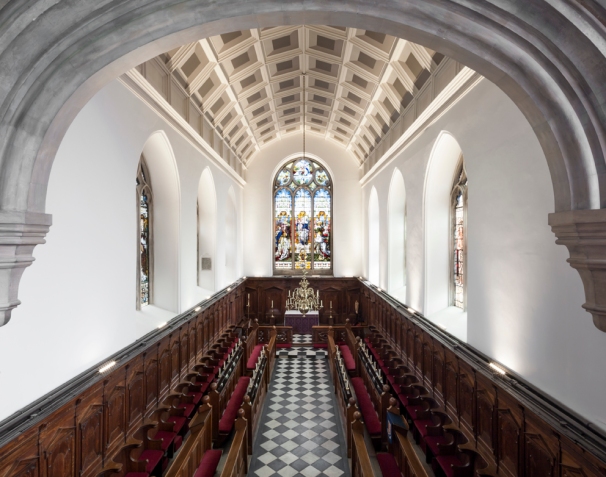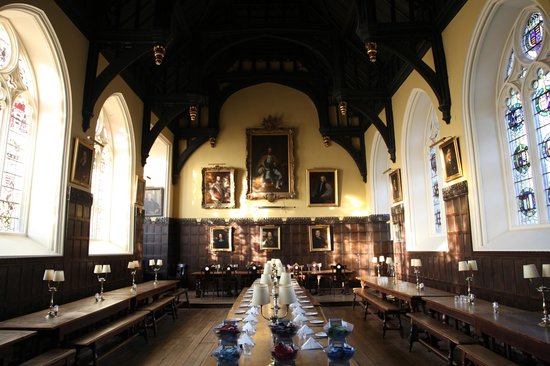Next webinar: Monday May 29th 4.30pm PST. Open to all registered Pontifex University students.
On Monday we have our third biweekly student webinar. This is intended as an extracurricular activity by which students can interact with teachers and each other in a relaxed and informal way.
In his Idea of a University, Cardinal Newman described his experiences as a student at Oriel College, Oxford in the early 19th century. He suggested that Oxford was perhaps the most effecient educational institution in the world for forming people in the desired way…to create men who would help Britain dominate the world and subjugate Catholicism!
While he did not agree with the end to which it was directed, he did see that the educational system. It still bore the pattern of that of the medieval model that had founded it, and was abolished in nearly every every major university in Western Europe by the occupying forces of Napoleon. Oxford, Cambridge and St Andrews in Scotland survived. At this time, American universities looked to recently established French and German model that replaced the abolished structures of the old univesities rather than the traditional medieval (and now British model).
What Newman was talking about was the college system was an educational community – the college – bound by common worship and prayer, dining and study. Each was limited in size and so if it reached its natural limit, perhaps 250-300 people, then a new college would be founded.
He claimed, based upon his experiences, that for all the worthy discussion of how an education might be delivered by consideration of the curriculum, teaching methods, exam systems, tutorials vs seminars or lecture and so on, at least as important as any of these in the formation of the person was the culture of the community. In this respect, the greatest influence a student came not from teachers, but peers.
We can see how the beauty of the buildings, there relationship to each other in the quadrangles, and how architecturally they point to the heart and height of community life which is the chapel.
You can see below, the front quad, the chapel, dining hall, and the library. Notice how the chapel is designed for antiphonal singing as in a monastery choir. The Divine Office was sung daily; and even after the reformation, the singing of the Anglican Offices of Mattins and Choral Evensong drew the community together supernaturally. These are sung to this day.




This is something that I felt, palpably, in my own experience at Oxford nearly two hundred years later (my college was St Edmund Hall). I felt, in hindsight, that for all the immorality and lack of regard for any Christian ideals, that this influence and atmosphere of the community was immensly strong and was for the good; and could only be improved if informed by a genuinely Christian ethos.
What does this have to do with webinars at an online university? I joined Pontifex because I believed that this is the future of education – it can allow many more people to afford a high quality education which they could trust to be true to the Magisterium.
The technology is getting better and better and as a result the possibilities of a sense of personal contact between teacher and student become steadily greater. Furthermore, this will only improve in time.
There is one aspect that is at first sight more difficult to engender, and that is the creation of a educational community. How do we engender informal with and between students?
In fact, there are things that students can do to participate in community even when a loner on the end of a computer. For example, if we develop a liturgical piety based around the Mass and the Divine Office and through this pray for our fellows. Even if we have no direct contact then we are praying for and with our fellows, we are in communion with them. I encourage faculty, staff and students to pray for each other and for Pontifex as whole, that all may work for the common good in accordance with God’s will. The power of is should not be underestimated.
The webinar is an opportunity to have direct communication and exchange with other students. We have had two so far and my sense is that they really do engender discussion beyond the scope of normal classes and they represent a chance to think aloud without worry about what others think. The last one, on the creation of a schema for liturgical art for a church in the Roman Rite was exciting for me. I had ideas from our students about how to incorporate imagery into liturgical practice and cathechism that I have never heard before.
My hope is that as our student body grows, that people will connect locally and the discussions will continue. Amongst those who attended this time two were from the same parish in Oregon, so I hope that are talking about this when they see each other in the choir loft of St Stephen’s in Portland they will just continue the conversation!
And in the future I don’t see why we can’t have local networks and communities of people who gather from time to time to discuss, study, eat and pray together; this benefit their education and through their prayers, contribute to the good of the whole community beyond their own locale. This is the Way of Beauty that opens us up to God’s grace; and it is the path to divine wisdom.
![]()
We may not have a chapel like that of Oriel College, Oxford, but we can have a host of humble but beautiful domestic churches or icon corners that emulate the home altars of the early Church!
